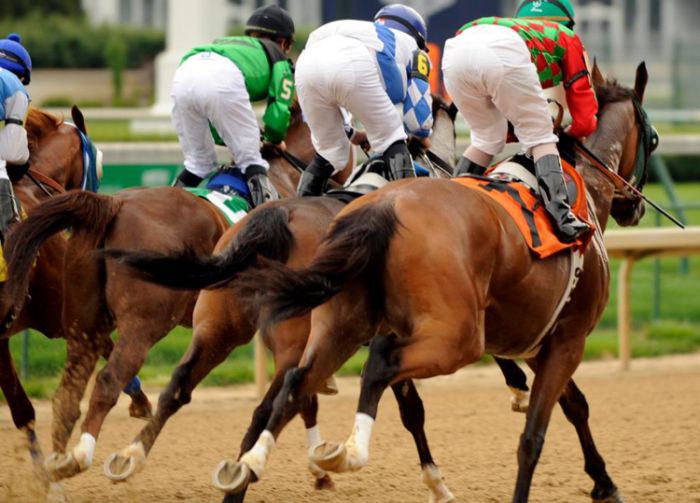

Hosted annually at Churchill Downs in Louisville on the first Saturday in May, the Kentucky Derby began officially in 1875 and unlike other big horse races (Preakness and Belmont, for example), the Derby has never taken a hiatus. The man responsible for it all is Colonel Meriwether Lewis Clark, Jr., the founder of Louisville Jockey Club and the builder of Churchill Downs. According to the Derby's official site, Clark first came up with the idea for the Jockey Club when he was traveling in England and France, wanting a place to conduct race meets and showcase Kentucky's breeding history. The track began to be known as Churchill Downs but the title wasn't made official until 1937.

Clark raised $32,000 by selling 320 memberships at $100 each, making enough to lease eighty acres of land around three miles from downtown and build a clubhouse, grandstand, porter's lodge and six stables for the track's opening. Three stakes races were devised for the May 17, 1875 opening — the Kentucky Derby, Kentucky Oaks and Clark Handicap — which were modeled after England's premier races, the Epsom Derby, Epsom Oaks and St. Leger Stakes. The very first winner of the Kentucky Derby was Aristides, a three-year-old chestnut colt that was owned by H.P. McGrath, trained and ridden by two African Americans, Ansel Williamson and Oliver Lewis.

Photo Courtesy of The Kentucky Derby Museum
For a horse to compete in the Kentucky Derby (which attracts some 150,000 people today) it has to be three-years-old, making the race an incredibly limited and once-in-a-lifetime opportunity for horses and jockeys. Winning horses are draped with roses, which first began in 1896 with winning racer Ben Brush. The red rose has since become the official flower of Churchill Downs with the winning horse receiving a garland of over 400 roses and the winning jockey getting a bouquet of 60 roses, earning it the nickname "Run for the Roses".

Photo Courtesy of The Kentucky Derby Museum
The race, which is one and a quarter miles long and closes a two week festival, brings in many different traditions that play a huge role in the history and legend. Even if you know nothing about the Kentucky Derby, you probably know about the iconic fashion (mainly the prevalence of hats) and drinking of mint juleps (which is made with bourbon, mint and sugar). Open to everyone, approximately 80,000 people buy general admission tickets and pour into the infield to party with friends. The chances of actually seeing even one horse from the infield — which is a viewing area inside the track — is slim to none, but that doesn't stop people from partying in pure Mardi Gras fashion, clutching their tickets in hopes their chosen horse wins. Alternatively, the rich and famous, including trainers and owners, enjoy the race from box seats known as Millionaire's Row. This is where you'll see the outlandish pastel outfits and whimsical matching hats you associate with the Kentucky Derby.

The Kentucky Derby promises an event like no other, something that is as much about being seen as it is about the actual race. Attracting all walks of life, from the wealthy to the underdogs, everyone gets caught up in the same mad dash to the finish line. If you Google "The Kentucky Derby", the second hit will be Louisville-born Hunter S. Thompson's famous 1970 article "The Kentucky Derby is Decadent and Depraved," which focused more on the crowd than it did on the race, defining the event for millions.
A race of both esteem and hard partying, maybe Thompson said it best when he wrote, "[…]The clubhouse bars on Derby Day are a very special kind of scene. Along with the politicians, society belles and local captains of commerce, every half-mad dingbat who ever had any pretensions to anything at all within five hundred miles of Louisville will show up there to get strutting drunk and slap a lot of backs and generally make himself obvious."










